One of the things that most surprised me when I moved into finance as a profession (I use the term loosely) was the stunning lack of evidence for most of the things that were spoken about. My observation was that this lack of substantiation seemed to be a vertically integrated industry. Nobel Prizes were handed out for theories that didnt stack up in the real world (Efficient Market Hypothesis) commentators and sell side advisors spouted all sorts of nonsense. I am pleased to report that in almost three and a bit decades not much has changed. I run a carefully curated list of reading sources but occasionally something slips through and bobs up like a turd in a freshly cleaned pool. The latest candidate is this piece from the Murdoch stable. I have cut and pasted the headline piece below.
Source – news.com.au
The overall tone of the piece is one of breathless hyperbole about the coming end of the world and why everyone should go out and sell every asset they have and buy gold because as the young people say…..reasons. I actually need to take these reasons apart because they are clearly incorrect and based upon the most feeble of evidence. This piece is part of a troubling increase in panic and fear mongering that seems to be emanating out of Western Australia and Queensland which is hardly surprising. These schemes all seem to be designed to get people to buy into whatever gold purchasing scheme is going around and they are backed up by flimsy over inflated pieces of data.
The piece I quote makes several claims all of which have to be tested as to their veracity.
The ‘paper’ money that we all use is being printed by Governments at an alarming rate. Since this cash is not backed by a physical asset, it is easy, but not good, to keep printing more of it.
Government debt around the world is at record highs. The US Government has debt in the trillions, Australia, the UK and most of Asia (other than China) are all up to their eyeballs in debt.
This makes the somewhat simplistic assumption that all government debt is bad and debt at present is at staggeringly high records – this is a favourite chestnut of right wing commentators who believe that governments should not spend money on anything other than tax breaks and concessions for their friends. When debt is talked about the yardstick used is often US government debt which sits at about $21 trillion which when viewed in simplistic isolation sounds like a staggering number but the economic impact of debt as an instrument is relative in nature. Consider this simple example, if you told someone you had just borrowed $10 million then they would most likely blanch at the thought of carry such a debt load. But if you earned $10 million a year the perspective changes. This is the situation with US debt US GDP as shown below is matching their levels of debt.
Source – Forbes and YChcarts
As a result we are seeing extreme levels of volatility in currency markets.
No we aren’t – the chart below looks at realised and implied levels of volatility in the currency markets and as you can see they are at low levels. In fact FX traders are bemoaning the lack of volatility in their markets. Just because something appears to the naked eye to go up and down this is not indicative of volatility.
Source – Bloomberg
When there is volatility in currency markets, especially the US dollar, interest turns to safer investments, such as gold.
Right now there is money flowing into gold stocks, physical gold and gold ETFs.
No they are not. There are a few ways we can do this. The first is by making an assumption that if the hyper wealthy were seeking refuge in gold then they would seek out instruments that would accommodate the size of the positions they would take. Only one gold ETF is really capable of this – the US ETF GLD. This movement into the instrument would show up in changes in the traded volume. The chart below is a monthly chart of the GLD with volume and the average long term volume plotted.
As you can see traded volume has been below its long term average for almost a year – clearly there are no massive inflows into this ETF. This lack of activity can be seen when we look at some additional metrics. When an instrument is highly traded there is an increase in price discovery – this increase in price discovery increases the efficiency of information flows. This is confirmed by the schematic below tracks the flow of funds into or out of an ETF over a variety of time frames.
Source – ETFdb.com
There has been a net outflow of funds over every time frame examined, In simple terms the weight is being carried by sellers and not buyers as people exit the fund.
We can also confirm this by looking at slightly more sophisticated metrics that delve a little bit deeper into the nature of transactions that are occurring within the market. When there is a great deal of activity within an instrument price discovery increases. This increase in activity reduces the bid/ask spread as the transactions become more friction less. The more information a system has the more efficient it is and the closer buyers and sellers are in their expectations The charts below look at some of these metrics.
Source – ETF.com
You can see that the daily spread has actually widened reflecting a lack of interaction and hence information within the system. As systems leak information they essentially suffer an increase in the amount of noise – if vast swarms of buyers were present we would not see this pattern develop. What we see is the reverse, a flow of funds out of the instrument a consequent decrease in activity and a breakdown in transaction efficiency.
You may raise the argument that instead of buying instruments that are subject to some form of disclosure the wealthy might like to take a more circumspect approach and take part in what might be considered off book transactions. These would still however show up in a shift in the supply demand curve and according to The World Gold Council such transactions are simply not showing up –
Gold demand stayed soft in Q2, dropping to 964.3t. The H1 total of 1,959.9t is the lowest since 2009.
ETF inflows have steadied at low levels in recent quarters, making for weak y-o-y comparisons. Q2 jewellery demand dipped 2% to 510.3t, largely due to a weaker Indian market. The pace of central bank buying also slowed in Q2 (-7%). Bar and coin demand was virtually unchanged as growth in a few key markets cancelled out weakness elsewhere. Technology demand provided some relief, adding 2% to reach a three-year high. Gold supply notched up a second consecutive quarter of growth, (up 3%) reaching 1,120.2t…..Source World Gold Council
The article continues with the good old standard of –
Physical gold has a limited supply.
Limited supply and higher demand, equals increased price for gold. That’s what we want in an investment, right?
Unlike in the gold rush era when gold was being found in great quantities, there haven’t been any significant new gold mines discovered in the last decade.
Not according to the data – world gold production has been increasing for the past ten years and has a positive slope.
Source – Wikipedia
Gold miners continue to mine existing and neighbouring sites, but there hasn’t been enough new discovery to balance demand.
This constraint on supply will eventually impact the price as well. Especially if currency markets experience any form of panic.
See the chart above for actual data not speculation.
Only this week we learned that property prices in Sydney have fallen by six per cent in the past year. Melbourne hasn’t fared much better.
Interestingly gold has fallen 8% this year and is 34% of its peak. So the advice is to sell one asset and buy another one that has gone down more?
And despite the stock market inching closer to record highs, there is concern that companies are finding it harder and harder to grow and therefore push stock prices higher.
Again not according to the data which shows a positive trend in actual and predicted forward earnings – the predictions are a waste of time but the reality is actual earnings have been increasing for almost a decade.
Source – Seeking Alpha
In times where property and stocks aren’t able to generate above-average returns, big financial institutions look elsewhere to make money.
See earlier for the fact that there is no wide spread institutional involvement in precious metals
That’s where gold and other precious metals like silver become attractive.
The only time an instrument becomes valuable is when more people want to own it than want to sell it and at present this is not the case with gold no matter what sort of warm and fuzzy story you pitch. This raises a few questions. The most obvious of which is when do you buy anything and the obvious answer is when it is going up. For some this proves to be a difficult thing to discern however it is much easier than you think because the market tells you when it is going up. The chart below is gold with 52 weeks high plotted. It is not very sophisticated but it is very robust.
As you can see gold has not generated a new 52 week high for about 27 months, since then it has gone sideways. Once again if there were swags of billionaires sitting around on their yachts buying gold then the market would have noticed. It is pretty clever that way.
However there is an accessory question that flows from this and that is are you better of buying physical gold as the conspiracy theorist insist or are you better off buying gold shares. The answer to that is quite simple and can be found below. In the chart below I have compared the value of $1 invested in the NYSE Gold Bugs Index which tracks unhedged gold producers versus $1 invested in physical gold. The gold bugs win easily when gold is rising and remember we only want to own things when they are going up.
So what is the moral of the story?
The moral is quite simple – narratives dont count whereas data does. All the data presented here is freely available to the public, none of it is hidden from view behind paywalls or part of some secret cartel. It just took an hour or so of looking around and a bit of critical thinking to come to the correct conclusion. Other than starting with a conclusion and then trying to massage a story to fit it.



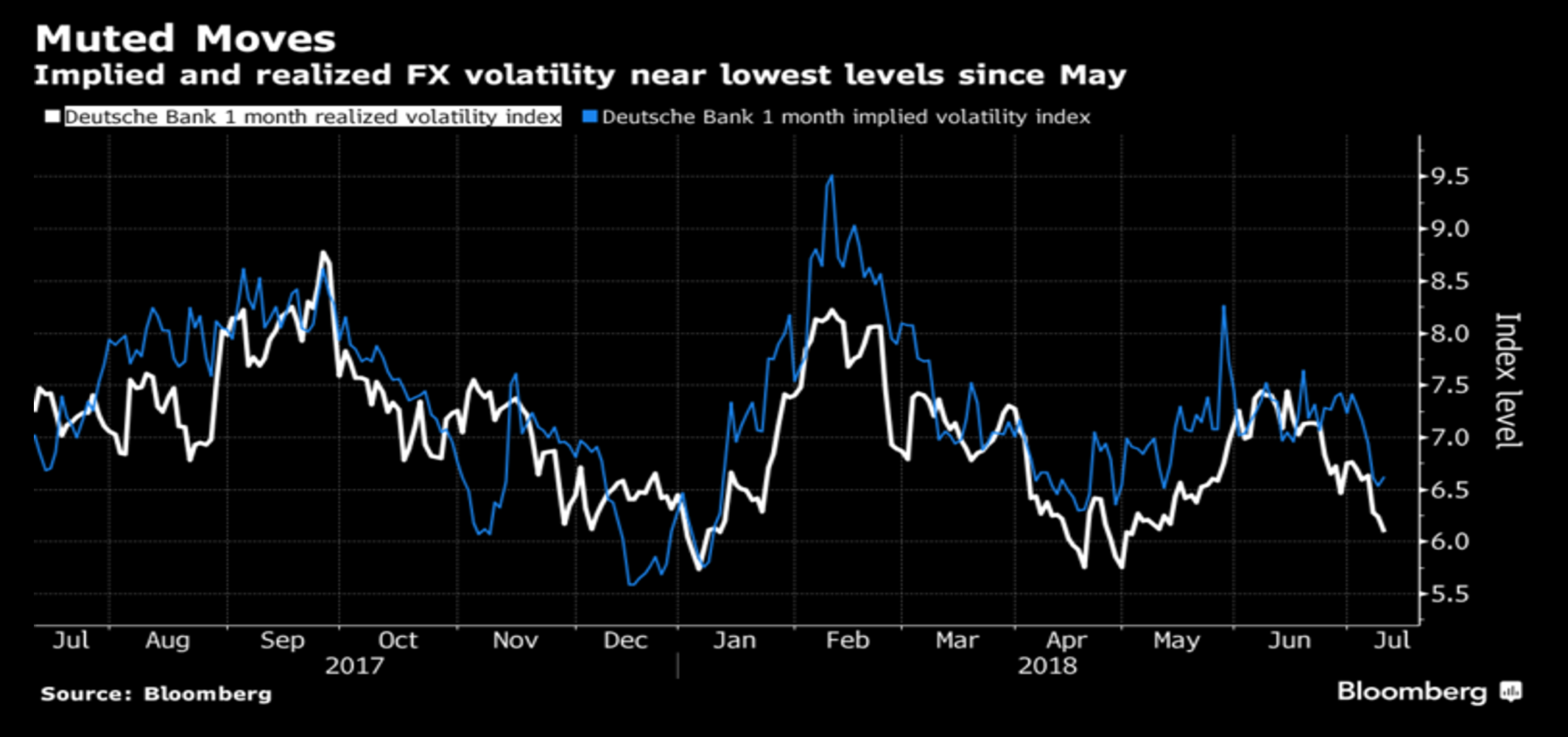
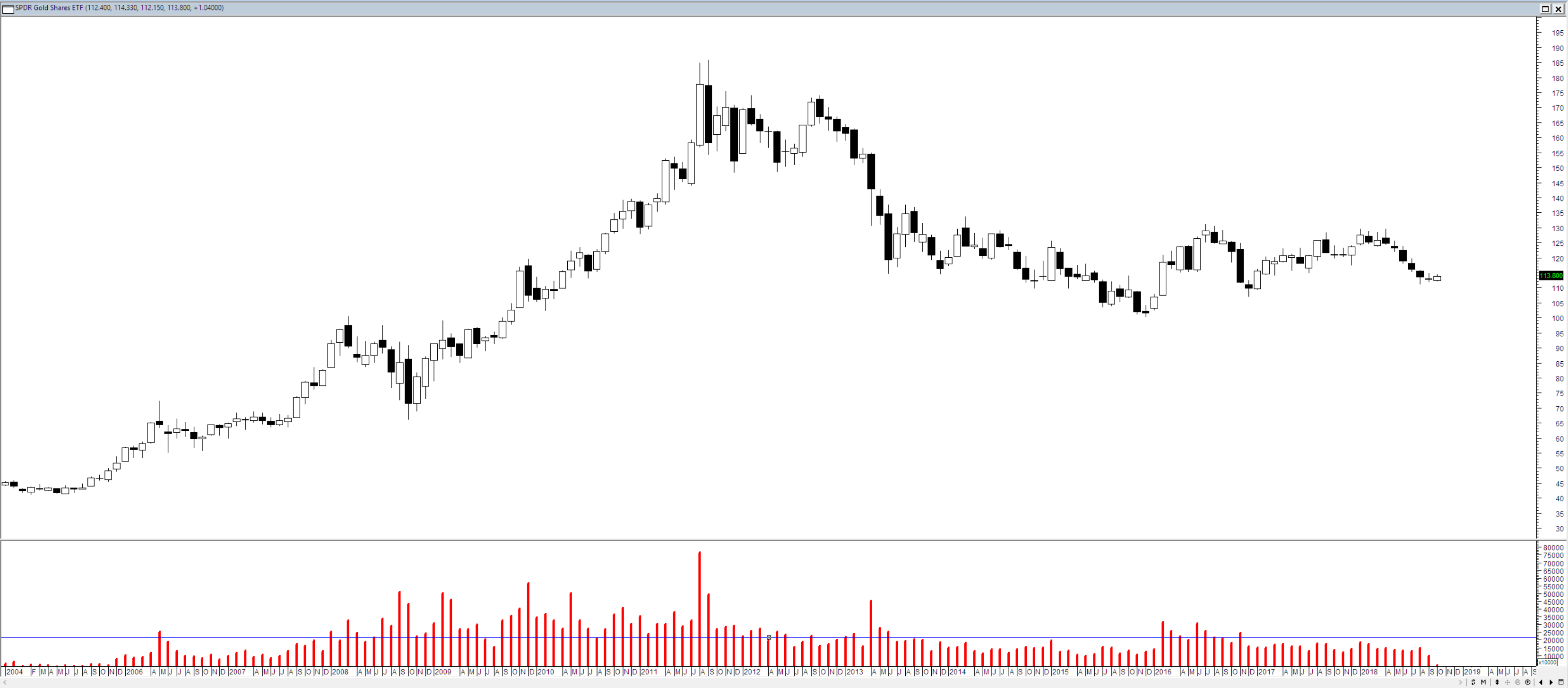
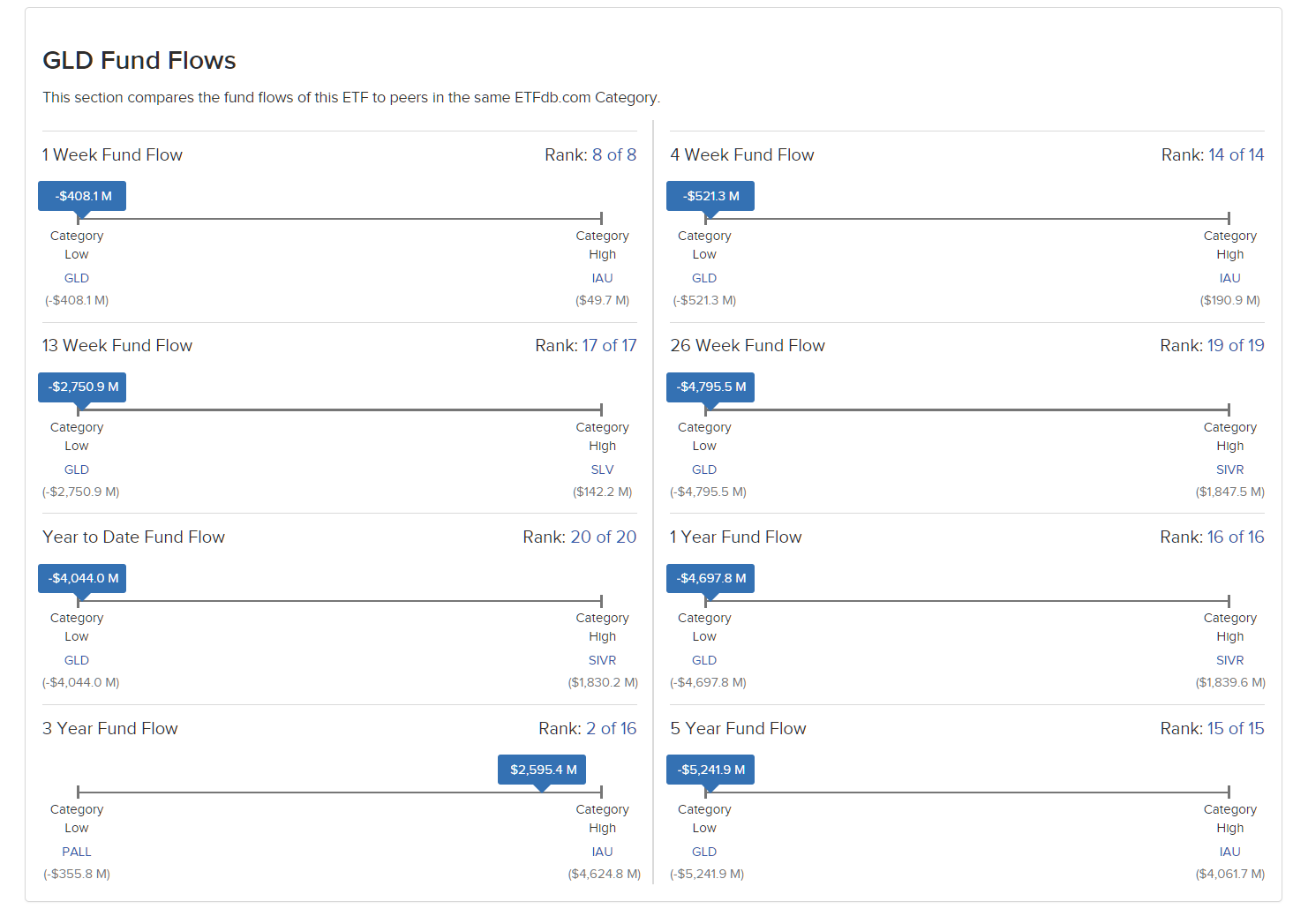
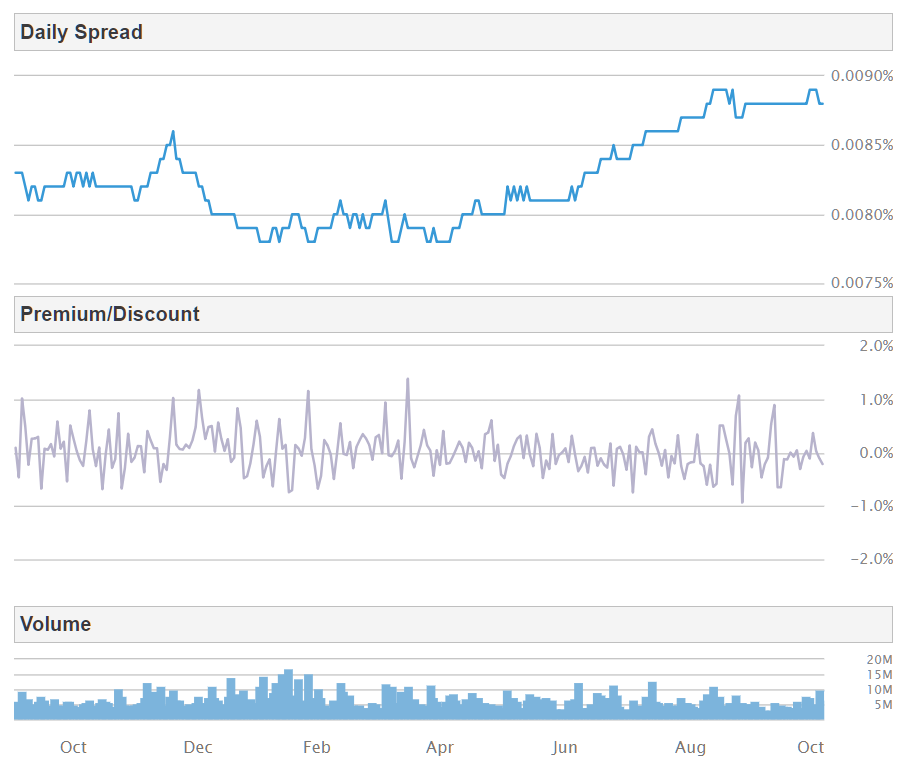
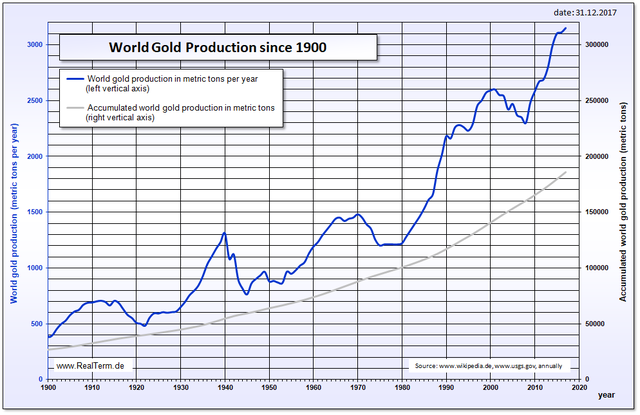
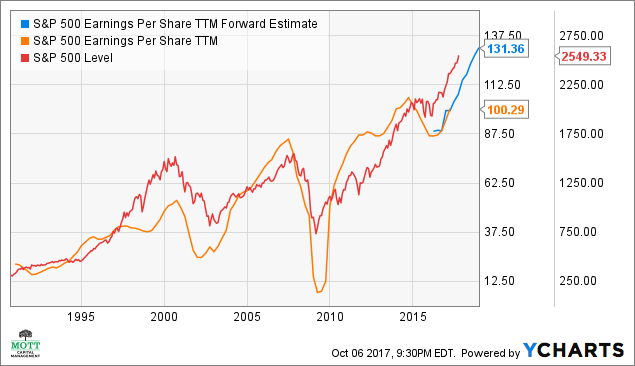

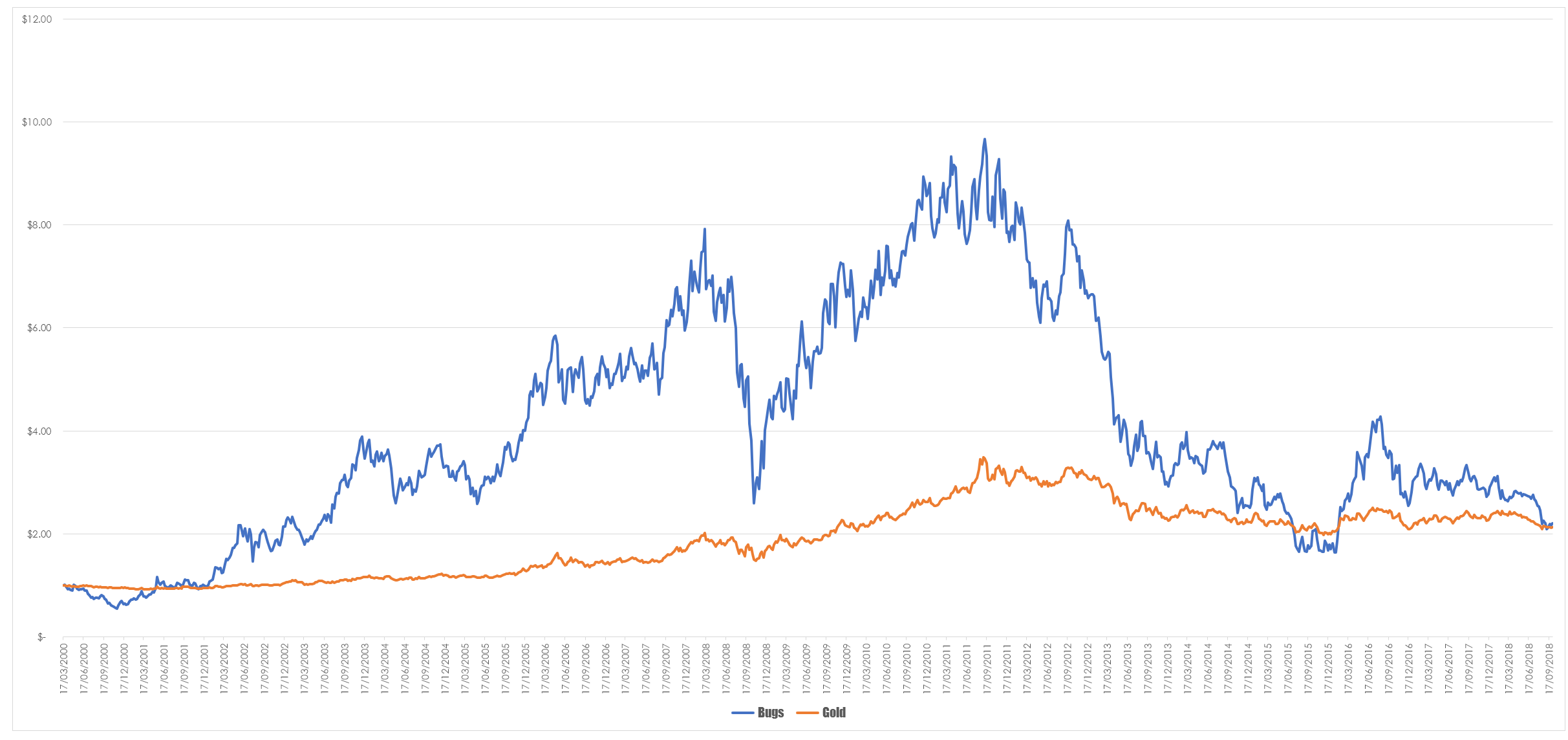





Hi Chris
Would be interested to hear your take on James Rickards ‘The Road to Ruin’. His take on it is that the next time the brown stuff hits the fan there will be a lot of people who think they own physically own gold actually don’t.
My view of James Rikards is unfortunately not very complimentary. A childish conspiracy theory peddeler who sees evil cartels everywhere.
Chris, Brilliant article once again. Please do us all a favour and run for a Prime Minister candidate in the next election? Our blessed country needs your kind of perspective and intelligence desperately.
Cheers
Roy